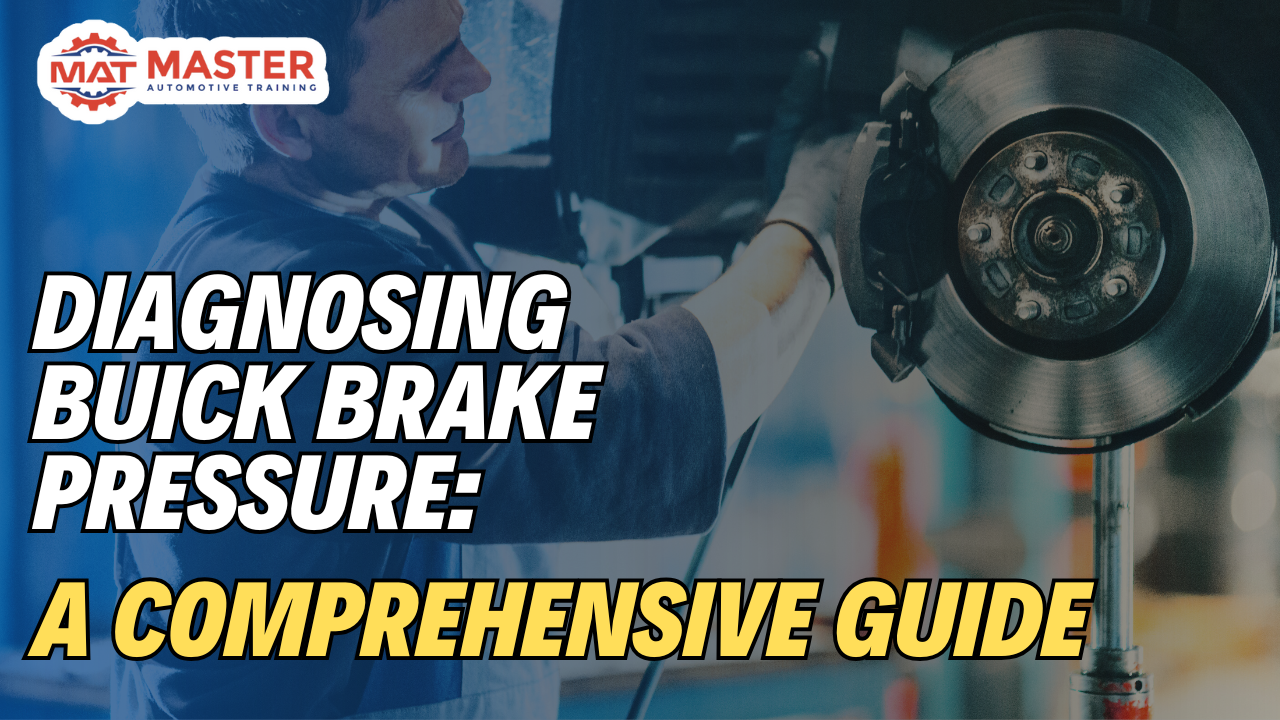 Proper brake function is crucial for the safety and performance of your vehicle, and understanding brake pressure is key to diagnosing issues in your Buick. Whether you’re experiencing soft brakes, a pulsating pedal, or unusual noises, diagnosing brake pressure can help you pinpoint the problem. This blog will guide you through the process, helping you keep your vehicle safe and roadworthy.
Proper brake function is crucial for the safety and performance of your vehicle, and understanding brake pressure is key to diagnosing issues in your Buick. Whether you’re experiencing soft brakes, a pulsating pedal, or unusual noises, diagnosing brake pressure can help you pinpoint the problem. This blog will guide you through the process, helping you keep your vehicle safe and roadworthy.
Understanding Brake Pressure
Brake pressure refers to the force applied to the brake pads, which in turn compresses against the brake rotors to slow or stop the vehicle. Issues with brake pressure can arise from several factors, including air in the brake lines, worn components, or hydraulic system failures. Recognizing the symptoms early can prevent more extensive repairs down the line.
Common Symptoms of Brake Pressure Issues
Before diving into diagnostics, it’s essential to recognize the signs that indicate a problem with brake pressure:
- Soft or Spongy Brake Pedal: If the pedal feels mushy or goes to the floor, air may be present in the brake lines.
- Hard Brake Pedal: A brake pedal that is unusually hard may indicate a problem with the brake booster or vacuum system.
- Pulsating Pedal: A pulsating sensation when braking can be a sign of warped rotors or uneven brake wear.
- Unusual Noises: Grinding or squeaking noises may indicate worn brake pads or other component failures.
Tools and Materials Needed
To diagnose brake pressure effectively, you’ll need the following tools:
- Brake pressure gauge
- Wrench set
- Socket set
- Brake fluid
- Rags
- Safety glasses and gloves
Step-by-Step Guide to Diagnosing Brake Pressure
Step 1: Safety First
Before starting any diagnostics, prioritize your safety. Park your Buick on a flat surface, engage the parking brake, and wear safety glasses and gloves.
Step 2: Visual Inspection
Begin with a visual inspection of the brake system. Check for:
- Leaks: Look for any signs of brake fluid leaks around the master cylinder, brake lines, and calipers.
- Worn Components: Inspect brake pads and rotors for wear. If pads are worn down to the indicators, they need replacing.
- Brake Lines: Ensure that all brake lines are in good condition, free from cracks or corrosion.
Step 3: Check Brake Fluid Level
Open the hood and check the brake fluid reservoir. If the fluid is low, it may indicate a leak in the system. Top off with the manufacturer-recommended brake fluid if necessary.
Step 4: Using a Brake Pressure Gauge
- Attach the Gauge: Connect a brake pressure gauge to the brake line at the caliper or wheel cylinder. Ensure it’s securely fastened to avoid leaks.
- Pump the Brake Pedal: With the vehicle off, pump the brake pedal several times to build pressure. Observe the gauge reading.
- Check Pressure Levels: The gauge should indicate a steady pressure. If it drops quickly, there may be a leak in the system.
Step 5: Bleed the Brakes
If air is suspected in the brake lines, bleeding the brakes is essential:
- Start with the furthest wheel from the master cylinder (typically the rear passenger side).
- Attach a clear hose to the bleeder valve on the brake caliper, placing the other end in a container to catch fluid.
- Pump the brake pedal and hold it down, then open the bleeder valve to release air and fluid. Close the valve and release the pedal.
- Repeat until no air bubbles are visible in the fluid. Move to the next wheel and repeat the process.
Step 6: Test Drive
After bleeding the brakes, take your Buick for a test drive. Pay attention to the feel of the brake pedal and listen for any unusual noises. Ensure the brakes respond quickly and effectively.
Conclusion
Diagnosing brake pressure issues in your Buick is essential for maintaining vehicle safety and performance. By following these steps, you can identify common problems and take appropriate action to address them. If you’re unsure or if problems persist after your diagnostics, it’s wise to consult a professional mechanic. Regular maintenance and timely repairs will keep your brakes in optimal condition, ensuring a safe driving experience for you and your passengers. Happy driving!
